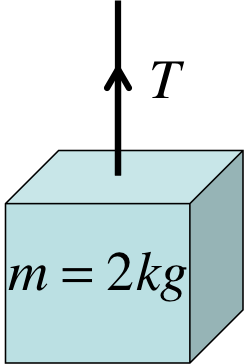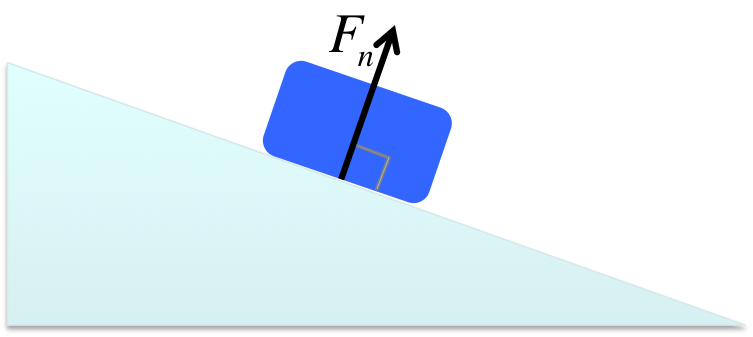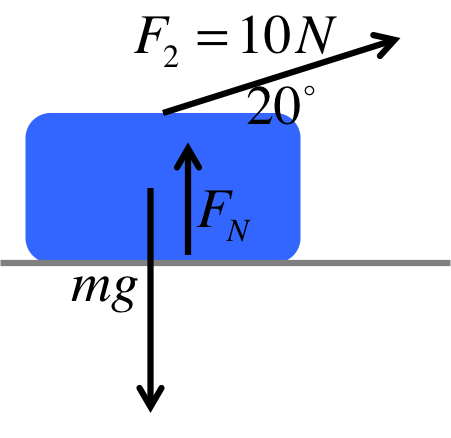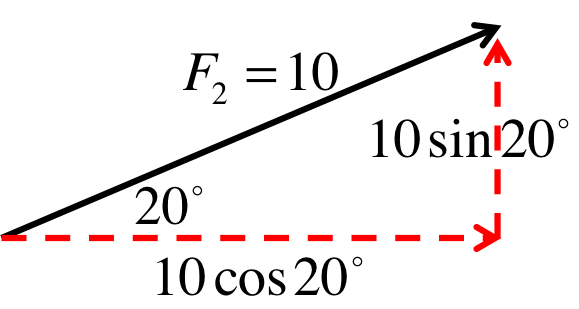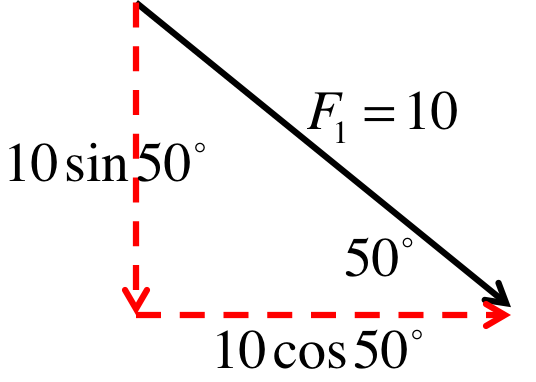Most of the problems you do will involve more than one forces, all point in different directions. It is essential that you know how to deal with this situation correctly. There are many methods to do this, but I will teach you one that is the easiest to apply to problems you see in this course.
Below shows the two possibilities you have to learn about:
(a)

(b)

These are called "free-body diagrams", or "force diagrams". Each is a dot with arrows coming out of it. The "dot" represents the mass, while each arrow is a force. On the outside, you could use another arrow to denote the acceleration.
In our convention, every variable on the force diagram represents only the magnitude, so they are all positive. We let the arrows represent the directions, and we do not use negative numbers, even if they point left or down. Do not use the "up is positive, down is negative" convention we had in chapter 1 and 2.
With this convention, this is how you apply the Second Law:
$$
\begin{eqnarray}
(\text{forces in the same direction as }a) - (\text{forces in the opposite direction to }a) &=& ma \\
\text{Or symbolically: } F_{same}-F_{opposite} &=& ma
\end{eqnarray}
$$
Again, the \(a\) and the \(F\) in this equation are
magnitudes so they will all be positive numbers in this convention.

(a) Since \(F_1\) is opposite to \(a\) and \(F_2\) is in the same direction as \(a\), we have:
$$
\begin{eqnarray}
F_{2}-F_{1} &=& ma \\
\Rightarrow a &=& \frac{F_2-F_1}{m}
\end{eqnarray}
$$

(b) Since \(F_1\) is same direction as \(a\) and \(F_2\) is opposite to \(a\), we have:
$$
\begin{eqnarray}
F_{1}-F_{2} &=& ma \\
\Rightarrow a &=& \frac{F_1-F_2}{m}
\end{eqnarray}
$$
Be very careful with the order of the forces. If you reversed them you will get the wrong answer.
A \(2kg\) block is being accelerated upward at \(4m/s^2\) by a cable. Find the tension \(T\) in the cable.
First you must start with a force diagram. There are two forces, the tension \(T\) and the weight of the object \(mg\). The question states the acceleration is upward so it is indicated in the diagram.
$$
\begin{eqnarray}
F_{same}-F_{opposite} &=& ma \\
\Rightarrow T - mg &=& ma \\
\Rightarrow T &=& mg+ma = m(g+a) \\
&=& (2)(9.8 + 4) = 27.6N
\end{eqnarray}
$$
Note that tension is a force, so it is measured in \(N\) just like all forces.
Try It Yourself (click to show)
First you must start with a force diagram. There are two forces, the tension \(T\) and the weight of the object \(mg\). The question states the acceleration is downward so it is indicated in the diagram. In this case, \(mg\) is in the same direction as \(a\) but \(T\) is opposite.
$$
\begin{eqnarray}
F_{same}-F_{opposite} &=& ma \\
\Rightarrow mg - T &=& ma
\end{eqnarray}
$$
$$
\begin{eqnarray}
mg - T &=& ma \\
\Rightarrow T &=& mg-ma = m(g-a) \\
&=& 2(9.8-4) = 11.6N
\end{eqnarray}
$$
If there is no acceleration, the two opposing forces must cancel out. This means they must have the same magnitude:
$$
\begin{eqnarray}
T &=& mg \\
\Rightarrow T &=& 2(9.8) = 19.6N
\end{eqnarray}
$$





